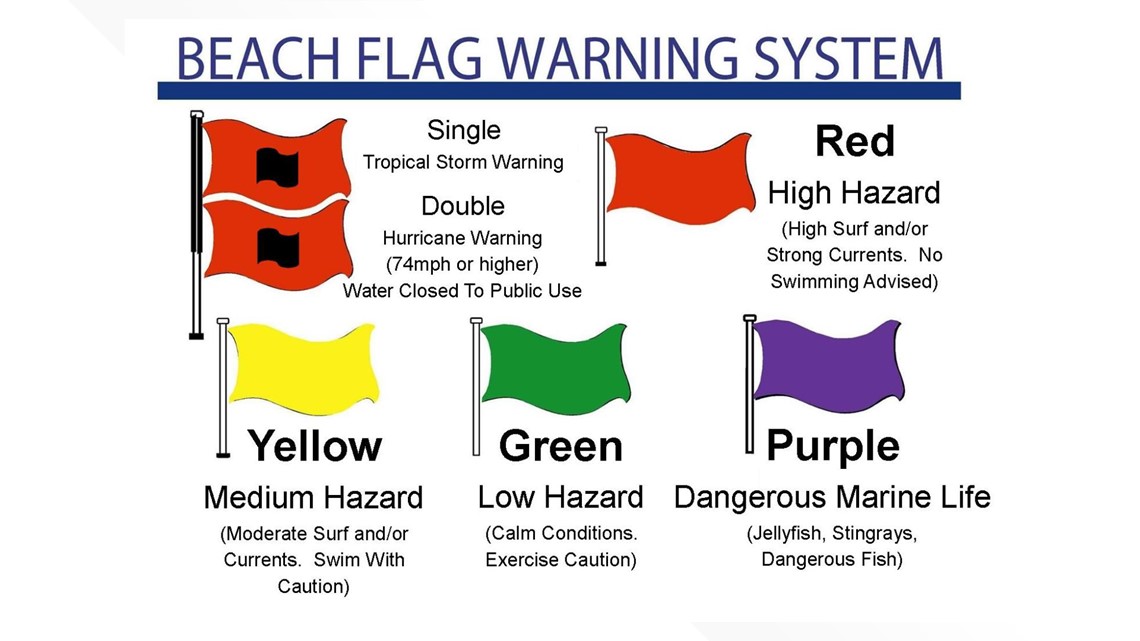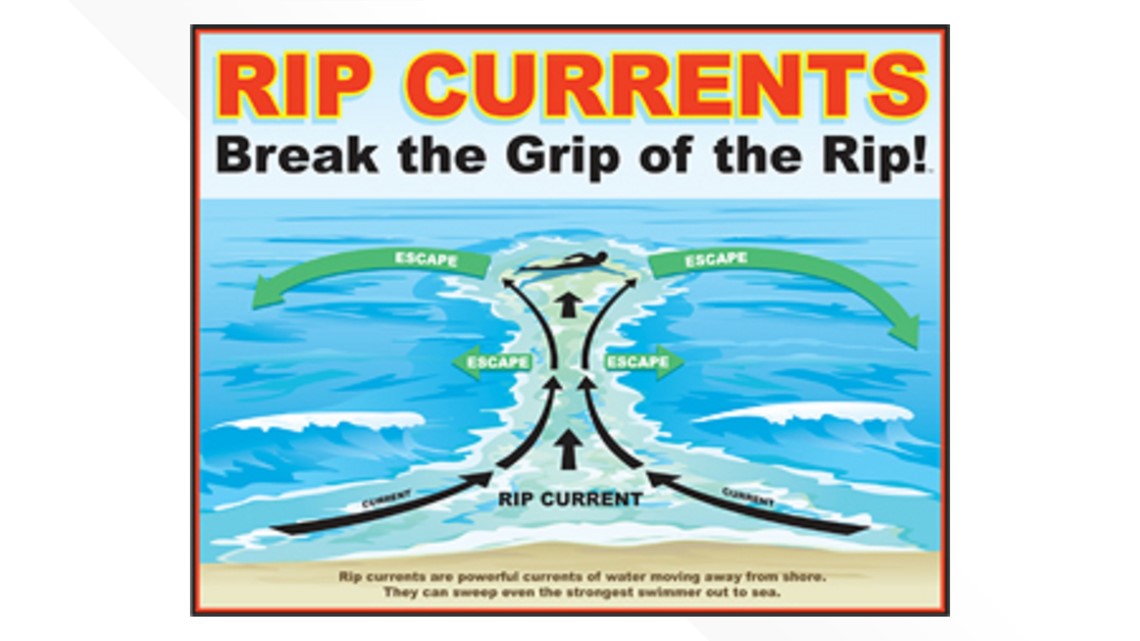VIRGINIA, USA — Author's note: The video above previously aired on May 21, 2021.
As Tropical Storm Henri rolls through the Atlantic Ocean this weekend, there's a chance of more dangerous waters for Hampton Roads beachgoers.
The storm is expected to stay well east of southeast Virginia, but will likely cause more swells and rip currents at the beach.
The U.S. National Weather Service defines rip currents as currents of water flowing away from the shore. Certain conditions can cause these currents to move faster. According to NWS data, 65 people died from them last year.
While those gnarly waves will be tempting for surfers, avoiding danger is more important. The National Weather Service and Coast Guard have some tips for avoiding and surviving rip currents.
Know the warning flags
Some beaches will have warning flags to help beach-goers know the swim conditions. According to the U.S. Coast Guard, there are four types of flags you should know about:
- Green: This means the conditions are calm.
- Yellow: This means the surf or current is moderate. Swim with caution.
- Red: This means swimming isn't recommended because of high surf or strong currents.
- Purple: This means there's dangerous marine life. Some examples are jellyfish, stingrays and dangerous fish.


Spotting a rip current
The Coast Guard says you can find most rip currents by looking for signs of a dark gap that looks like a path through the surf. The water will look darker in the rip current.
If you have polarized sunglasses, they may come in handy.
What to do if you get caught
The NWS recommends staying calm when you get caught in a rip current.
Don't try to swim against the current nor swim to shore. Swim along the shoreline until you can escape the current. When you're free, swim at an angle away from the current toward the shore.
If you need help, face the shore and yell or wave.


Other tips
Check the weather before you go to the beach. 13News Now has the latest forecasts and interactive radar map on our website and inside our app.
The NWS recommends swimming with a friend. If you have a problem while swimming, the other person can help, and vice versa.
Several beaches in the area have lifeguards on duty at certain times of the day. More information can be found on their websites:
Author's note: The video above previously aired on June 3, 2017.

